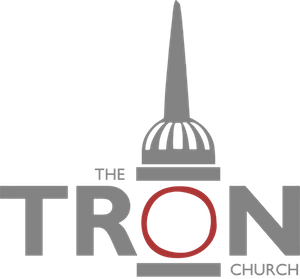"16 So he delivered him over to them to be crucified.
So they took Jesus, 17 and he went out, bearing his own cross, to the place called The Place of a Skull, which in Aramaic is called Golgotha. 18 There they crucified him, and with him two others, one on either side, and Jesus between them. 19 Pilate also wrote an inscription and put it on the cross. It read, “Jesus of Nazareth, the King of the Jews.” 20 Many of the Jews read this inscription, for the place where Jesus was crucified was near the city, and it was written in Aramaic, in Latin, and in Greek. 21 So the chief priests of the Jews said to Pilate, “Do not write, ‘The King of the Jews’, but rather, ‘This man said, I am King of the Jews.’” 22 Pilate answered, “What I have written I have written.”
23 When the soldiers had crucified Jesus, they took his garments and divided them into four parts, one part for each soldier; also his tunic. But the tunic was seamless, woven in one piece from top to bottom, 24 so they said to one another, “Let us not tear it, but cast lots for it to see whose it shall be.” This was to fulfil the Scripture which says,
“They divided my garments among them,
and for my clothing they cast lots.”
So the soldiers did these things, 25 but standing by the cross of Jesus were his mother and his mother's sister, Mary the wife of Clopas, and Mary Magdalene. 26 When Jesus saw his mother and the disciple whom he loved standing nearby, he said to his mother, “Woman, behold, your son!” 27 Then he said to the disciple, “Behold, your mother!” And from that hour the disciple took her to his own home.
28 After this, Jesus, knowing that all was now finished, said (to fulfil the Scripture), “I thirst.” 29 A jar full of sour wine stood there, so they put a sponge full of the sour wine on a hyssop branch and held it to his mouth. 30 When Jesus had received the sour wine, he said, “It is finished”, and he bowed his head and gave up his spirit."
John 19:16-30
John makes repeated reference in this passage to the fulfilment of the Scriptures in connection with the death of Christ. The reference in 24 is to Psalm 22:19, in 28 to Psalm 69:22, in 36 to Exodus 12:46, and Psalm 34:20, and in 37 to Zechariah 12:10. We must not miss the significance of this. John is showing that the death of Jesus was not a mistake, or an unforeseen event, but something that had been foreseen and predicted in the Scriptures and pre-determined by God. This is just as surely to place a particular interpretation on Christ's death as Paul does. True, on the surface the story seems to be a simple, unadorned account of the death of Christ, but it is loaded with theological insight; it is as if John were saying, 'Ah yes, but this simple story has a hidden significance, it is fulfilling Scripture, it has been foretold in the prophets and in the Psalms. It was God's plan that He should die. John is therefore proclaiming here what Paul also said, in 1 Corinthians 15, that 'Christ died for our sins according to the Scriptures'.
There is a chasteness about John's language, nevertheless, and indeed a reticence, which characterises the other gospel writers also, in this sense, that there is little description of the actual crucifixion of Jesus. It is almost as if they felt that this was too sacred a thing to recount in detail. This may be an indication to us that we also should not probe too deeply into the physical and gruesome details of the crucifixion scene; the gospel writers draw a veil, so to speak, over it.
